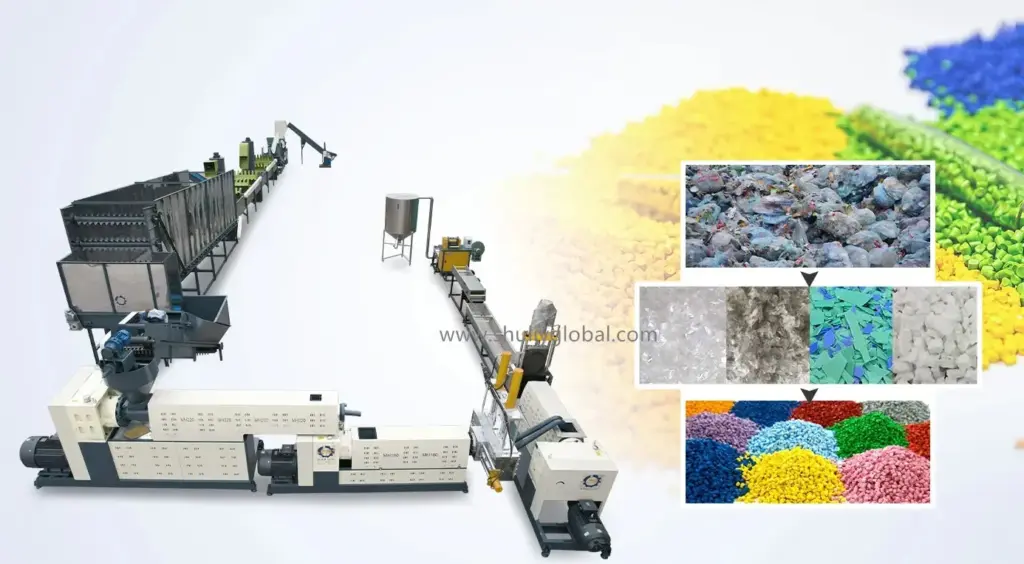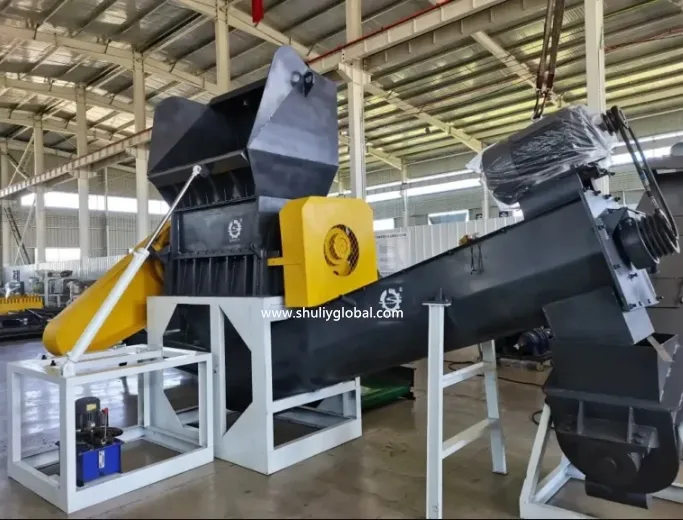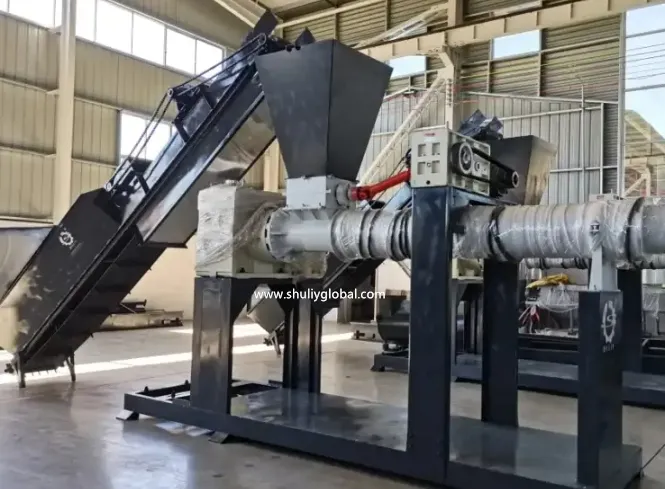The price of plastic granulator machines varies greatly, mainly depending on the following core factors:
1. Equipment type and degree of automation
This is the primary factor affecting the price of plastic granulator. According to the type of plastic processed and the process flow, plastic pellet machines can be divided into many types, and their degree of automation is also very different:
Single screw pellet machine vs. twin screw pellet machine:
Single screw pellet machines are usually relatively simple in structure and low in price, suitable for recycling and granulation of most general plastics (such as PE, PP).
Twin screw pellet machines (especially co-rotating twin screws) have better mixing, shearing and exhaust capabilities, suitable for processing high-filling, modified, engineering plastics or occasions requiring higher product quality, and the price is usually several times that of single screws.
Forced feeding model: For light materials such as films and woven bags, forced feeding devices are required, which increases costs.
Water ring pelletizer vs. strand pelletizer vs. air-cooled pelletizer:
Strand pelletizers (water-cooled or air-cooled) are relatively simple and low in cost.
The water ring pelletizer has a high degree of automation and a more uniform particle shape, but the equipment structure is more complex and the price is higher.
Degree of automation: From manual operation to fully automated production lines, the higher the degree of automation, the more sensors, control systems, and auxiliary equipment (such as conveyor belts, fans, and silos) are required, and the higher the price. Fully automated production lines can achieve integrated operations from crushing, cleaning, dehydration to granulation and packaging, greatly improving efficiency.
2. Types and characteristics of processed materials
Different types of waste plastics have different requirements for pellet machines, which affects the price:
Soft plastics (films, woven bags, etc.): A stronger forced feeding system and a specific tool design are required to prevent winding.
Hard plastics (bottles, pipes, plates, etc.): A more robust crushing system and wear-resistant tools are required.
Foamed plastics: It is difficult to handle and requires professional crushing and degassing technology.
Degree of pollution: If the waste plastics are seriously polluted (such as oil, mud, and impurities), a more complete cleaning, dehydration, and filtration system is required, and these auxiliary equipment will significantly increase the total investment.
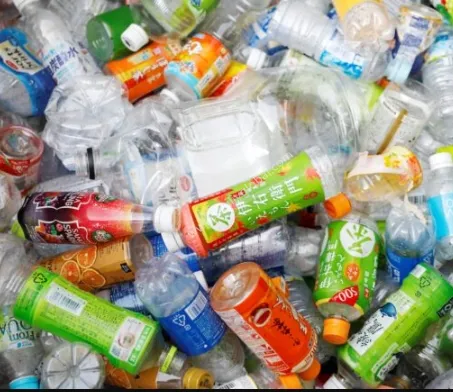

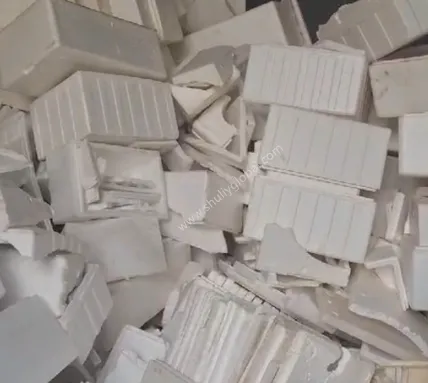
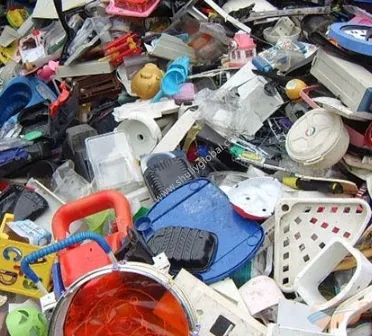
3. Production capacity (output)
Production capacity, that is, the amount of material that can be processed per hour (kg/hour), is a key factor in determining the size and price of the equipment.
Small plastic pellet machine: The output is between tens and hundreds of kilograms/hour, and the price is usually between tens of thousands and hundreds of thousands of RMB. Suitable for small workshops or initial attempts.
Medium plastic pellet machine: The output is between hundreds of kilograms and one ton/hour, and the price may be between hundreds of thousands and hundreds of thousands of RMB. Suitable for medium-sized recycling companies.
Large plastic pellet machine: The output reaches several tons/hour or even higher, and the price may be as high as millions of RMB. Mainly serves large industrial recycling projects.
The larger the output, the more powerful the motor, the stronger the body, the longer the screw or more auxiliary equipment is needed, so the price is also higher.
4. Brand, technology and configuration
Well-known brand vs. ordinary brand: Pellet machines of internationally renowned brands or domestic first-line brands are usually more expensive than ordinary brands due to their technical accumulation, quality control, and better after-sales service.
Core component configuration: The brand and quality of core components such as motors, reducers, electrical components (such as PLC, inverters, and thermostats) directly affect the performance and stability of the equipment. High-quality configuration will increase the cost of the equipment.
Special technologies: For example, special filtration systems, exhaust systems, forced feeding technologies, and energy-saving designs for highly polluting plastics will increase the technical added value and price of the equipment.
5. Auxiliary equipment and customized requirements
A complete set of plastic pellet production lines includes not only the pellet machine host, but may also involve the following auxiliary equipment:
Crusher/crusher: Used to break large pieces of plastic into small pieces.
Washing line: Including flotation tanks, friction washing machines, dehydrators, etc., used to remove impurities and moisture.
Squeezer/dehydrator: Dehydrate the washed materials.
Air delivery system: Transport materials to each link.
Silo/storage tank: Used for material storage.
Vibrating screen: Screen particles to ensure uniform size.
Cooling system: Cool the plastic particles.
Packaging system: Weigh and package the finished pellets.
If the customer has special customized requirements, such as modifications for specific waste materials, additional safety features, special plant layout adaptability, etc., these will increase the design and manufacturing costs.
Advice on investing in plastic pellet machines
When considering purchasing a plastic pellet machine, in addition to price, it is more important to conduct a comprehensive return on investment analysis:
1. Clarify the needs: Determine the type of material you will process, the degree of contamination, the expected output, and the quality of the final product.
2. Investigate the manufacturer: Choose a manufacturer with strength and reputation, and understand its production process, technical support, and after-sales service.
3. On-site inspection: If conditions permit, it is best to visit the manufacturer’s equipment production line and even watch the trial process.
4. Compare configurations: Learn more about the configurations, core component brands, and technical parameters of different models, and don’t just look at the total price.
Summary:
The price of a plastic pellet machine is a multivariate function, which is affected by a variety of factors such as equipment type, processed materials, production capacity, brand technology, and auxiliary equipment. If the budget is limited, you can start with small or simple equipment; for large-scale industrial applications, you need to consider investing in more advanced and more automated production lines.
I hope this article can help you have a clearer understanding of the price structure of plastic pellet machines, so that you can make investment decisions that are more suitable for your business development.
If you have specific purchasing needs, it is recommended that you contact us directly. As a professional plastic machinery manufacturer, we will quickly give you advice and quotes on the machines you consult.

